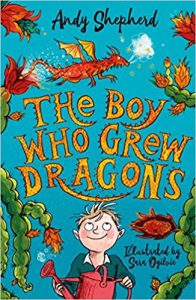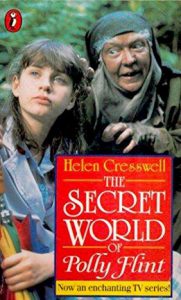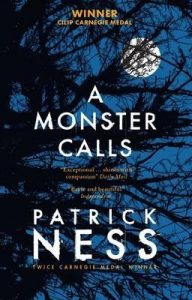
February 18, 2019, by Rupert Knight
The Importance of a Daily Whole-Class Read – Enjoying a Book for a Book’s Sake
Past posts in this series have discussed picture books in the primary classroom and high quality children’s literature. In this new post Sally Betteridge considers the benefits of reading to your class.
The joy and wonder on their faces as you capture them in the imaginary world of the story – they are hooked on your every word and you hear that unanimous sigh as you announce that it’s time to stop reading. You know that it has captured them as they discuss it with you at playtime, or any opportunity they have. The shared community that is created and that sense of belongingness is magical.

The power of the whole class read
The whole class read, whether it’s a longer novel or a picture book, is an essential part of the Primary school classroom. It is one very important way that we can model our enthusiasm for reading and for books and create magic and excitement around the special joy of reading a good book. Your enthusiasm for reading as a class teacher is one of the most important things that you can do in your classroom and research shows that it has more of a positive effect on reading achievement and the life-long love of reading than any other reading intervention. As Teresa Cremin argues, being a teacher that reads and has a love of and good knowledge of books is one of the single most important things that you can do as a Primary teacher.
If I think back to my Primary School years, the most vivid and happiest memories are of being read to in the classroom. The magical world of Polly Flint by Helen Cresswell is still very vivid in my mind because of the way my Year 6 teacher read this to us.

I can still remember how a sense of community was achieved and what it felt like to be sharing those experiences together; every day at the end of the day we were all transported to a world, in which we would all connect in a different way. For some it might have offered escape and relaxation; for some it might have shown them that there was a different world and ways of life beyond the one they were living; or it may have triggered emotions close to the heart as the characters grappled with difficult family relationships and hardships and maybe challenging ideas. What it did for all of us, was show us what reading had to offer and that it was to be enjoyed in a comforting way.
How will children know that reading is a pleasurable experience if they are never read aloud to and never really enjoyed a book for a book’s sake in a social shared experience?
As well as this vital element of creating a positive, pleasurable experience, there are many benefits of reading a whole class text:
-
Encountering new words and enriching vocabulary – you experience words that would almost never come up in conversation.
-
Helps students appreciate the beauty and rhythm of language
-
Children can enjoy and understand texts beyond their own reading ability.
-
Enhances imagination and observation skills
-
Improves critical and creative thinking skills
-
Expands a student’s general knowledge and understanding of the world
-
Empathy is developed as they make connections with the experiences of the characters in the text and with each other
-
Fluent, expressive reading is modelled
-
Enables them to make meaning from more complex texts
-
Conditions the brain to associate reading with pleasure
-
Plants a desire to read
Dr. John Guthrie states that, “Reading engagement is more important than students’ family background consisting of parents’ education and income. Reading engagement connects to achievement more strongly than to home environment.”

Whole class reading and essential skills
Another aspect that a daily whole-class read is important for is widening and exposing children to new vocabulary. With this being so high on the agenda currently, then it is important that we see the wider importance of a whole-class read. Dominic Massaro, Professor Emeritus of Psychology at the University of California argues that reading aloud is the best way to help children develop the rich vocabulary and grammatical understanding required to learn how to read. He says that:
“…children listening to a reading of a picture book are roughly three times more likely to experience a new word type that is not among the most frequent words relative to the situation of listening to their caregiver’s speech. Thus, children experience a greater number of rare words and supposedly a more extensive and challenging vocabulary with picture books than with caregiver-directed speech.”
As well as these aspects, in the 21st century, we live in a world dominated by technological innovations and rapid change. In this world we need innovative thinkers, risk takers, imaginative minds, people who can live with uncertainty and deal with complexities and work both as individuals and as groups. Creativity is a critical element of all of this and so organisations all over the world are concerned with the promotion of creativity and want individuals who have these skills as well as the ability to empathise and work collaboratively in social contexts. Reading stories aloud to children has the ability to develop all of these skills and equip them to live in a rapidly changing world where critical thinking and creative skills are vital.
If we consider all of this and the research that argues that children who are read aloud to and discuss stories, read more and the more we read the more we learn and the more likely we are to continue to be life-long readers, then is reading a whole class text every day one of, if not the, most important aspect of a school day?
-
How often do you read a whole-class text aloud to your class? What benefits have you seen?
-
What are the difficulties around a whole class read every day?
-
What texts have you read to your class that they have loved?

As an NQT in Year 1, we have a story of the week, usually over 2 weeks. Alongside reading the set story a few times, using drama to act out the story and oral retell with actions, the children get to know the story really well by drawing story maps and I.e. retelling the story in their own words. We also read during milk and fruit as well as at the end of the day, usually books that kids have requested or T/TA chooses from the ELS box!! The kids have particularly enjoyed Stick Man and Robin Hood!